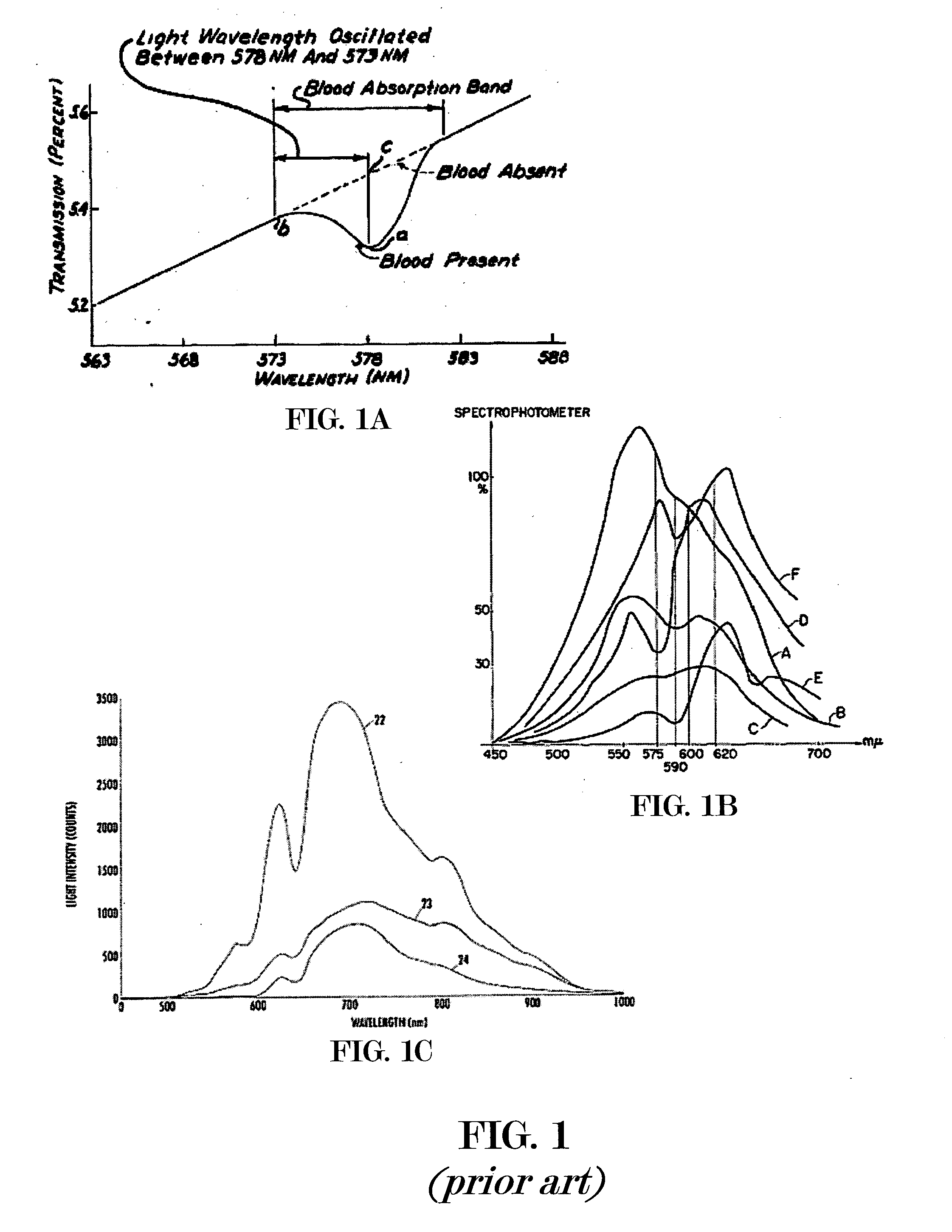Hyperspectral identification of egg fertility and gender
a technology of egg fertility and gender, applied in the field of noninvasive methods for determining fertility and gender, to achieve the effect of accurate detection of biochemical markers
- Summary
- Abstract
- Description
- Claims
- Application Information
AI Technical Summary
Benefits of technology
Problems solved by technology
Method used
Image
Examples
example 1
[0137]This example demonstrates the use of the invention herein disclosed as a method for determining the fertility of an avian egg on day 0, that is, the day on which the egg is settled in the incubator. In this example, 150 fresh white eggs (White Leghorn breed, Lohmann genetic line) were obtained directly from the henhouse. The fertility of the eggs was determined according to the method disclosed herein and the eggs were then placed in a Peterson incubator at the Faculty of Agriculture of Hebrew University. The eggs were incubated for three days and then opened to determine their fertility. The results of the determination were then compared with the results of the analysis of the measurements that had been made on day 0. The results of the physical check and the results of the analyses were kept separate until the comparison was made. The experiment was repeated several times, including with brown eggs.
[0138]From the sample, 50% of the eggs were chosen randomly as the “training...
example 2
[0143]The same methods were used as in Example 1, except that in this case, the measurement and analysis of the eggs according to the method herein disclosed was performed on Day 1 rather than on Day 0.
[0144]The parameters for the neural network model are summarized in Table 3.
TABLE 3Neural network parameters for measurement of egg fertility (Day 1)BiasIW−1.515734.826056−1.581651.24418−1.88819−0.897581.405691−3.30712−1.157492.2519091.407275−0.78174−1.136911.66082−2.344121.8865111.7261851.735988LW−2.6754−1.939872.181246−0.330962.5549091.968443−2.274430.340324
[0145]The comparison of the physical determination of the eggs' fertility with the results of the analysis performed according to the method disclosed herein is presented in Table 4.
TABLE 4Comparison of analysis and physical measurementFertile SpectraNon FertileOverallSetDetectedSpectra DetectedPerformanceDay 1 Training100% 31%91.1%Day 1 Validation100%42.9%92.9%Day 1 Test 99%21.4%89.3%Day 1 Overall99.7% 31.6%91.1%
[0146]Once agai...
example 3
[0147]In this set of experiments, 150 white eggs were obtained from the same source as those used in the previous examples. When the eggs arrived at the henhouse, their fertility was determined, and afterwards, they were placed in the incubator. On the tenth day after the eggs were settled in the incubator, the fertility of the eggs was determined by candling, and on the 12th day, determination of the gender of the chick within each egg was made according to the method disclosed herein. The eggs completed the incubation on the 21st day with their hatching. Upon hatching, the sex of the chick was determined by the method of feather sexing according to procedures well-known in the art. The results of the determination of sex by the physical examination were compared with those of the measurements made on the eggs on the 12th day after they were settled in the incubator.
[0148]The principal components analysis and neural network analysis were performed as described above. The parameters...
PUM
| Property | Measurement | Unit |
|---|---|---|
| time | aaaaa | aaaaa |
| wavelengths | aaaaa | aaaaa |
| wavelengths | aaaaa | aaaaa |
Abstract
Description
Claims
Application Information
 Login to View More
Login to View More - R&D
- Intellectual Property
- Life Sciences
- Materials
- Tech Scout
- Unparalleled Data Quality
- Higher Quality Content
- 60% Fewer Hallucinations
Browse by: Latest US Patents, China's latest patents, Technical Efficacy Thesaurus, Application Domain, Technology Topic, Popular Technical Reports.
© 2025 PatSnap. All rights reserved.Legal|Privacy policy|Modern Slavery Act Transparency Statement|Sitemap|About US| Contact US: help@patsnap.com



